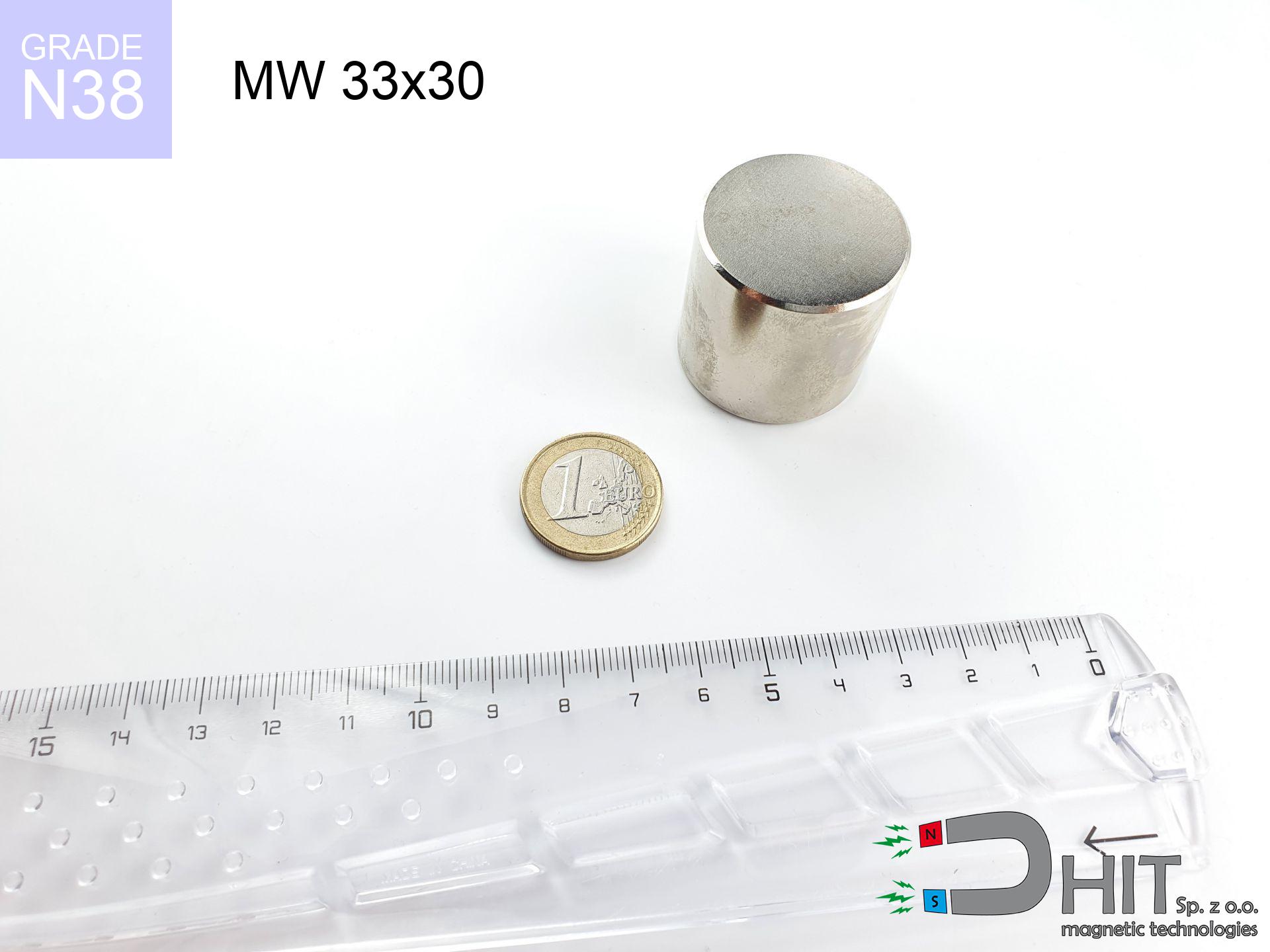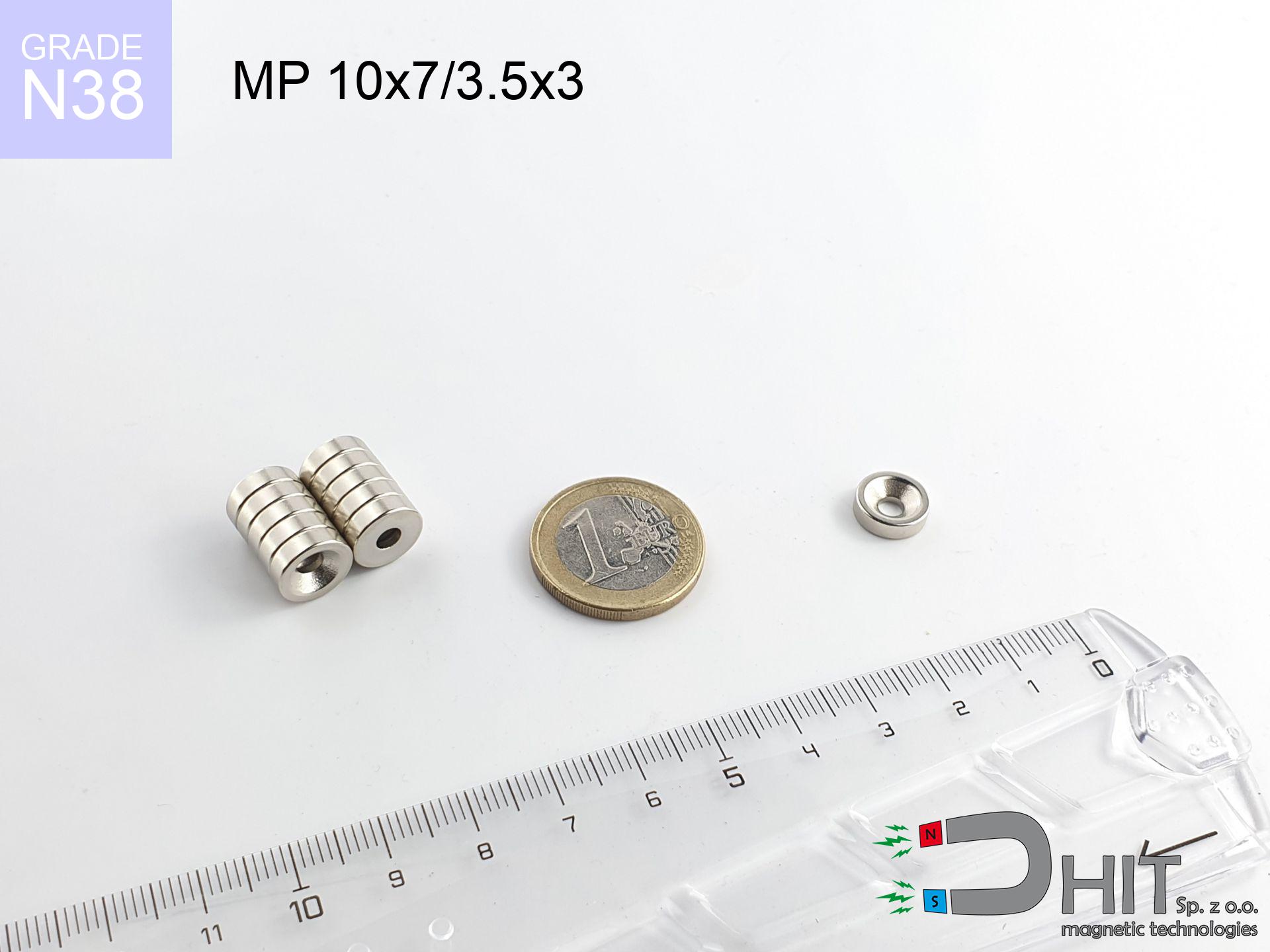AM ucho [M10] - magnetic accessories
magnetic accessories
Catalog no 080346
GTIN/EAN: 5906301812494
Weight
71.5 g
Load capacity
320.00 kg / 3138.13 N
7.38 ZŁ with VAT / pcs + price for transport
6.00 ZŁ net + 23% VAT / pcs
bulk discounts:
Need more?
Give us a call
+48 22 499 98 98
if you prefer let us know using
contact form
through our site.
Strength along with structure of neodymium magnets can be checked with our
power calculator.
Same-day processing for orders placed before 14:00.
Technical details - AM ucho [M10] - magnetic accessories
Specification / characteristics - AM ucho [M10] - magnetic accessories
| properties | values |
|---|---|
| Cat. no. | 080346 |
| GTIN/EAN | 5906301812494 |
| Production/Distribution | Dhit sp. z o.o. |
| Country of origin | Poland / China / Germany |
| Customs code | 85059029 |
| Weight | 71.5 g |
| Load capacity ~ ? | 320.00 kg / 3138.13 N |
| Manufacturing Tolerance | ±1 mm |
Physical properties of sintered neodymium magnets Nd2Fe14B at 20°C
| properties | values | units |
|---|---|---|
| Vickers hardness | ≥550 | Hv |
| Density | ≥7.4 | g/cm3 |
| Curie Temperature TC | 312 - 380 | °C |
| Curie Temperature TF | 593 - 716 | °F |
| Specific resistance | 150 | μΩ⋅cm |
| Bending strength | 250 | MPa |
| Compressive strength | 1000~1100 | MPa |
| Thermal expansion parallel (∥) to orientation (M) | (3-4) x 10-6 | °C-1 |
| Thermal expansion perpendicular (⊥) to orientation (M) | -(1-3) x 10-6 | °C-1 |
| Young's modulus | 1.7 x 104 | kg/mm² |
Elemental analysis
| iron (Fe) | 64% – 68% |
| neodymium (Nd) | 29% – 32% |
| boron (B) | 1.1% – 1.2% |
| dysprosium (Dy) | 0.5% – 2.0% |
| coating (Ni-Cu-Ni) | < 0.05% |
Ecology and recycling (GPSR)
| recyclability (EoL) | 100% |
| recycled raw materials | ~10% (pre-cons) |
| carbon footprint | low / zredukowany |
| waste code (EWC) | 16 02 16 |
See more offers
Pros as well as cons of neodymium magnets.
Strengths
- They do not lose magnetism, even during around 10 years – the reduction in strength is only ~1% (based on measurements),
- They are noted for resistance to demagnetization induced by presence of other magnetic fields,
- In other words, due to the metallic layer of nickel, the element gains a professional look,
- Magnetic induction on the top side of the magnet turns out to be exceptional,
- Due to their durability and thermal resistance, neodymium magnets are capable of operate (depending on the form) even at high temperatures reaching 230°C or more...
- Possibility of detailed modeling as well as adjusting to complex applications,
- Fundamental importance in high-tech industry – they find application in mass storage devices, electric drive systems, advanced medical instruments, also complex engineering applications.
- Thanks to their power density, small magnets offer high operating force, with minimal size,
Weaknesses
- To avoid cracks under impact, we suggest using special steel holders. Such a solution secures the magnet and simultaneously increases its durability.
- When exposed to high temperature, neodymium magnets experience a drop in strength. Often, when the temperature exceeds 80°C, their power decreases (depending on the size and shape of the magnet). For those who need magnets for extreme conditions, we offer [AH] versions withstanding up to 230°C
- Due to the susceptibility of magnets to corrosion in a humid environment, we suggest using waterproof magnets made of rubber, plastic or other material stable to moisture, in case of application outdoors
- Limited possibility of making threads in the magnet and complex shapes - recommended is casing - magnetic holder.
- Potential hazard resulting from small fragments of magnets can be dangerous, if swallowed, which is particularly important in the context of child safety. It is also worth noting that small elements of these products are able to disrupt the diagnostic process medical when they are in the body.
- High unit price – neodymium magnets have a higher price than other types of magnets (e.g. ferrite), which can limit application in large quantities
Pull force analysis
Magnetic strength at its maximum – what affects it?
- with the use of a yoke made of low-carbon steel, ensuring maximum field concentration
- whose transverse dimension is min. 10 mm
- characterized by smoothness
- with zero gap (without impurities)
- for force applied at a right angle (pull-off, not shear)
- at ambient temperature room level
Magnet lifting force in use – key factors
- Gap (between the magnet and the plate), since even a very small distance (e.g. 0.5 mm) leads to a drastic drop in lifting capacity by up to 50% (this also applies to paint, corrosion or debris).
- Load vector – highest force is available only during pulling at a 90° angle. The force required to slide of the magnet along the surface is standardly many times lower (approx. 1/5 of the lifting capacity).
- Base massiveness – insufficiently thick plate does not accept the full field, causing part of the flux to be wasted into the air.
- Material composition – different alloys attracts identically. High carbon content worsen the attraction effect.
- Surface quality – the smoother and more polished the surface, the larger the contact zone and higher the lifting capacity. Unevenness creates an air distance.
- Thermal factor – high temperature weakens pulling force. Too high temperature can permanently demagnetize the magnet.
Lifting capacity testing was performed on plates with a smooth surface of suitable thickness, under a perpendicular pulling force, whereas under attempts to slide the magnet the lifting capacity is smaller. Moreover, even a minimal clearance between the magnet and the plate reduces the holding force.
Safety rules for work with neodymium magnets
Product not for children
Adult use only. Small elements pose a choking risk, causing serious injuries. Keep away from kids and pets.
Allergic reactions
Studies show that nickel (the usual finish) is a common allergen. If you have an allergy, avoid touching magnets with bare hands and choose encased magnets.
ICD Warning
Warning for patients: Powerful magnets affect medical devices. Maintain at least 30 cm distance or request help to work with the magnets.
Shattering risk
Watch out for shards. Magnets can explode upon uncontrolled impact, ejecting shards into the air. We recommend safety glasses.
Phone sensors
A strong magnetic field interferes with the operation of magnetometers in phones and navigation systems. Do not bring magnets close to a smartphone to avoid damaging the sensors.
Immense force
Before starting, check safety instructions. Sudden snapping can destroy the magnet or injure your hand. Be predictive.
Safe distance
Data protection: Neodymium magnets can damage data carriers and delicate electronics (heart implants, hearing aids, mechanical watches).
Pinching danger
Large magnets can crush fingers in a fraction of a second. Under no circumstances place your hand betwixt two attracting surfaces.
Fire risk
Drilling and cutting of NdFeB material poses a fire hazard. Neodymium dust oxidizes rapidly with oxygen and is difficult to extinguish.
Do not overheat magnets
Keep cool. NdFeB magnets are susceptible to temperature. If you require operation above 80°C, ask us about HT versions (H, SH, UH).

![Equipment for magnets AM ucho [M10] Equipment for magnets AM ucho [M10]](https://cdn3.dhit.pl/graphics/banners/magnet.webp)
![AM ucho [M10] - magnetic accessories](https://cdn3.dhit.pl/graphics/products/am-ucho-m10-tij.jpg)



![UMP 135x40 [M10+M12] GW F 600 kg / N38 - search holder UMP 135x40 [M10+M12] GW F 600 kg / N38 - search holder](https://cdn3.dhit.pl/graphics/products/ump135x40-m10+m12-gw-f-600-kg-luz.jpg)

